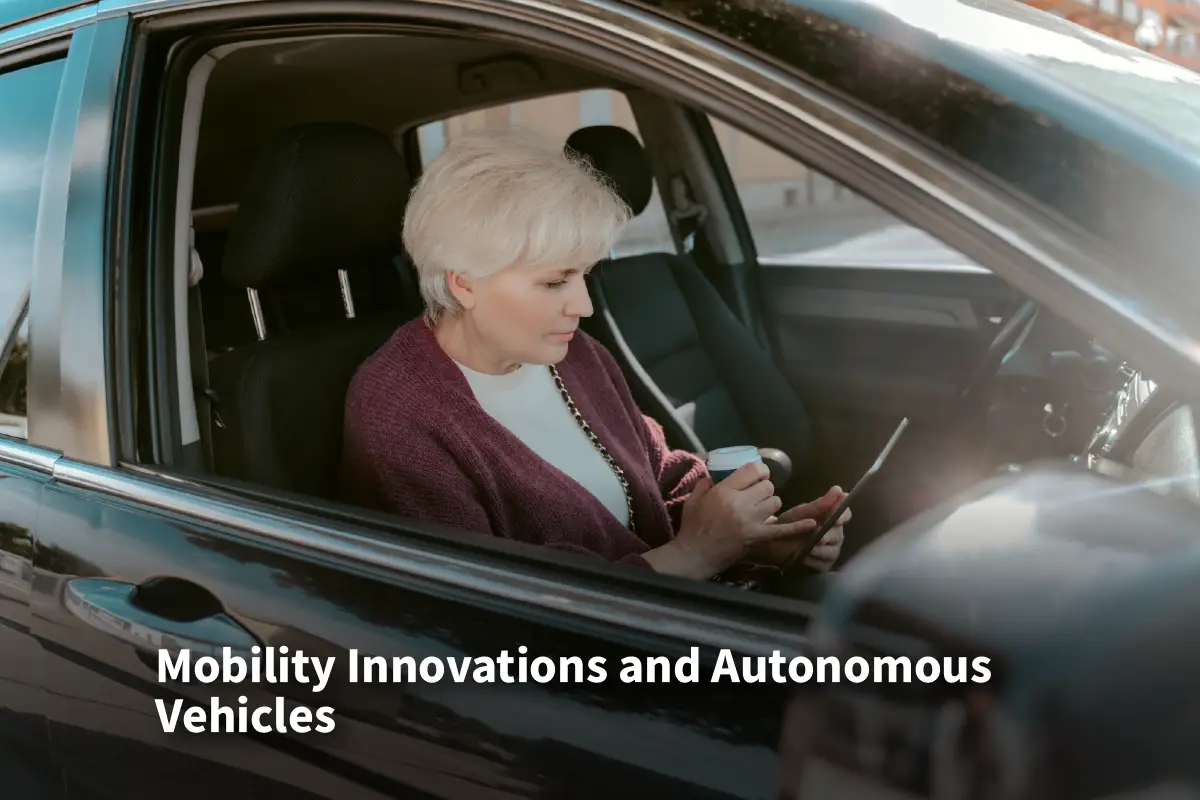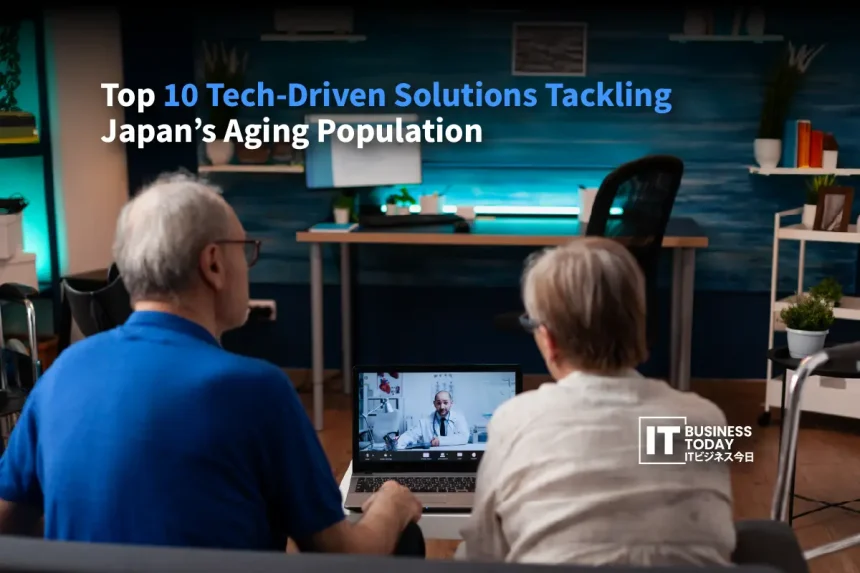Japan is known for its resilience and innovation. Its cultural values also celebrate longevity. The country is facing a major demographic challenge. It’s one of the most significant in the world. By 2025, over 30% of Japan’s population will be 65 or older. This figure is projected to rise to nearly 40% by 2060. This demographic change is stressing healthcare systems. It strains the labor market and challenges old caregiving models.
Japan is leading the way with tech solutions. They mix robotics, AI, and digital platforms. This aims to improve life for older adults. It also supports the economy and society. These innovations aren’t just ideas for the future. They’re changing eldercare, healthcare, and community life in Japan right now.
Robotics Transforming Elder Care
A clear response to Japan’s caregiving crisis is using humanoid care robots. AIREC is a 330-pound robot. It assists with moving patients, preparing meals, and handling household tasks. They aim to address labor shortages in nursing homes. The number of caregiving personnel required to support elderly individuals in need of care in Japan is estimated to reach 2.72 million by 2040, with a projected shortage of 570,000 workers. Robots can’t replace human empathy. They can handle repetitive physical tasks. This helps caregivers spend more time on emotional support and tough choices. Trials at Waseda University have shown positive results. But, it may take time for widespread use. This is due to costs and safety concerns.
Therapeutic companions are also popular. PARO is a robotic baby seal that helps reduce stress and loneliness. Pepper is a socially interactive robot. Both work alongside humanoid robots. These machines help nursing homes. They enhance mental engagement, provide companionship, and help reduce isolation for older residents. They show the softer side of robotics. Here, comfort is just as important as efficiency.
Also Read: Can Japanese Enterprises Optimize Legacy IT While Embracing Cloud Workloads?
Smart Homes and Aging in Place
Many people in Japan want to stay in their own homes for as long as they can. This is called ‘aging in place.’ It’s especially important as family support systems change. To meet this need, smart home and IoT systems are being introduced on a large scale. These include motion sensors, voice-activated assistants, and automated locks. They are made to ensure safety and independence. Smart monitoring systems can spot emergencies; such as falls or inactivity. They send alerts to caregivers or family members.
Japan is linking senior homes with families and health providers. This setup helps older adults live on their own. It also keeps them connected, which reduces social isolation. Integrating these systems really helps rural areas as access to hospitals and caregivers is limited in these areas.
Wearables and Telemedicine for Preventive Health
Preventive care is key for Japan’s aging population. Wearable devices and telemedicine are leading this change. Smartwatches track heart rate and sleep patterns. Connected devices track blood sugar levels and spot irregular heartbeats. These tools are changing healthcare for older adults. Telemedicine platforms allow patients to consult doctors from home. The COVID-19 pandemic sped up this change.
Insurance companies and care providers are investing heavily in these systems. SOMPO, a leading insurer in Japan, provides health-tracking solutions. These tools find problems early. This helps prevent hospital visits. This mix of wearables and telemedicine shows a move toward proactive healthcare. It lowers costs and boosts patient outcomes.
Data Platforms Redefining Personalized Care
Japan’s elderly care challenge is huge. It needs more than just gadgets; it needs solid systems. SOMPO created the Real Data Platform (RDP). It shows this approach well. It uses data from daily activities, medical history, and social interactions. Then, it creates personalized care plans. The platform helps caregivers see needs and spot risks. This lightens their workload and tailors services for everyone.
Data-driven personalization is a growing trend in eldercare. It’s moving toward digital ecosystems. It recognizes that each senior has unique needs. Effective care needs both precision and empathy.
Collaborative Robots and Workforce Support

Japan’s aging population affects more than healthcare. It also threatens productivity in many industries. The country could have a labor shortage of 11 million workers by 2040. Cobots, or collaborative robots, are increasingly used in agriculture, logistics, and retail. They help address the decline in these sectors. They can harvest crops, unload trucks, or clean stores. These jobs are often hard to fill because younger workers are scarce.
For an economy that values precision and reliability, automation goes beyond just boosting productivity. It’s now an economic necessity. Cobots are shifting human labor to more valuable tasks. This helps key industries keep running, even with fewer workers.
Financial and Social AgeTech Services
Elderly Japanese households have considerable financial assets. They average ¥15.9 million (US$146,000) in savings. Also, those over 60 control 65% of personal assets in Japan. This wealth has driven the rise of AgeTech services for older adults. Digital financial platforms, retirement planning apps, and online housing services help seniors manage their assets safely. They also keep seniors connected to society.
Some services help older adults stay economically active. Platforms link seniors to part-time jobs. Digital communities combat loneliness and promote lifelong learning. Treating seniors as active participants boosts their dignity and financial stability.
AI-Powered Dementia Care
Dementia impacts about 4.6 million people in Japan. This number is rising fast as the population ages. AI tools help spot early cognitive decline. They use speech analysis, memory exercises, and behavior tracking. Companies are testing conversational AI. This technology engages patients in meaningful dialogue. It helps boost memory and slow down decline.
These solutions do more than monitor. AI helps spot dementia early and offers daily support. This way, patients and their families can keep a good quality of life. It tackles a big challenge in elderly care.
AR and Sensor-Based Care Innovations
In institutions, augmented reality tools are helping caregivers. They make tasks easier and reduce workloads. SHECS systems use AR glasses with facial recognition. They quickly give caregivers information about residents. Accuracy rates exceed 99%. Staff find the technology effective for making daily routines simpler.
AI-driven home sensors are being tested. They can spot odd behaviors, such as falls, wandering, or being inactive for a long time. These systems are very sensitive and have low false alarm rates. They keep elderly people safe at home and respect their privacy. AR and sensor technologies greatly improve how we monitor elderly people. They offer a proactive and discreet way to keep track of their well-being.
Mobility Innovations and Autonomous Vehicles

Staying mobile is key to independence, especially in rural Japan. There, public transport options are few. Autonomous vehicles and smart transport systems are made for elderly people who can’t drive safely anymore. Cities like Fukuoka and parts of Hokkaido are running pilot programs. They are testing driverless shuttles. This helps seniors get to clinics, shops, and community centers.
These services do more than help. They cut down on isolation and provide access to essential services. As technology improves, mobility solutions will become critical for keeping seniors active and socially engaged.
Gerontechnology and Society 5.0
All these innovations come together in gerontechnology. This field aims to use technology to enhance the lives of older adults. In Japan, gerontechnology is part of Society 5.0. This national strategy focuses on creating a human-centered digital society. Technology is with us from birth to old age, as noted by the Carnegie Endowment. Japan leads the world by creating homes, healthcare, transportation, and financial systems that consider seniors. Society 5.0 uses innovation to help us thrive as our population ages.
Toward a Human-Centered Digital Future
Japan’s aging population is seen as a crisis. It’s sparking fresh ideas in healthcare, robotics, and the digital realm. Technology can enhance caregiving. It adds value instead of replacing human touch. Tech enhances care using humanoid helpers, smart homes, and health platforms. These tools enhance the human touch in caregiving.
Japan’s experience offers key lessons for countries with similar demographic changes. Foresight, adaptability, and respect for human dignity are key. Japan faces the challenge of supporting its aging population directly. Its tech-driven solutions show that creativity and empathy can turn longevity into an opportunity.







